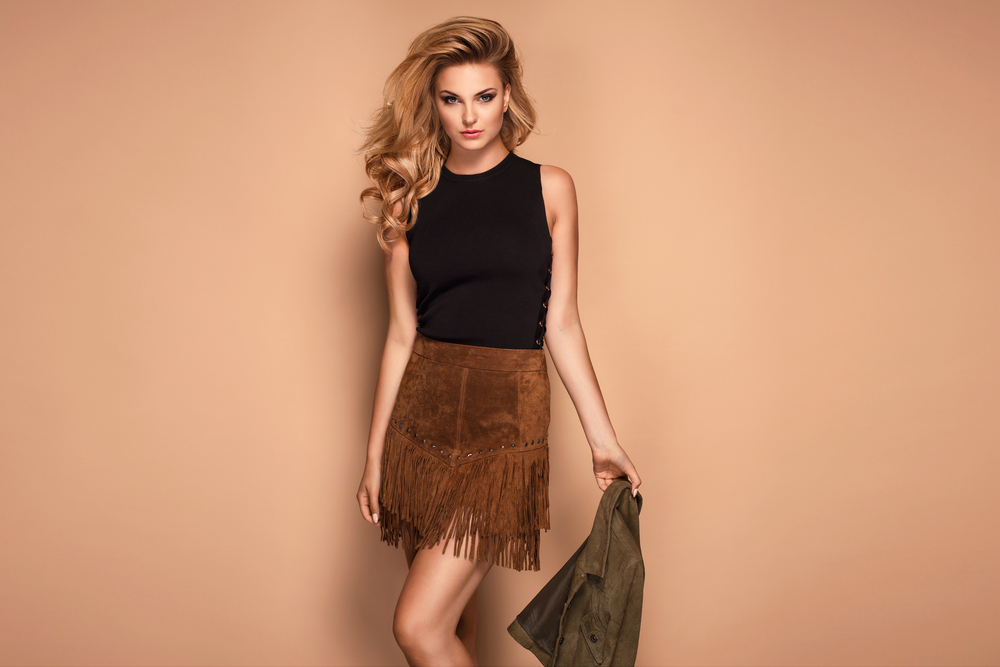The world of modelling is a fascinating and glamorous one, but behind the glitz and glamour lies a precise blend of art and science. Modeling is an art form that requires creativity, expression, and the ability to bring a designer's vision to life. At the same time, it is also a science, with its own set of rules, techniques, and strategies that can help aspiring models navigate the industry successfully. In this article, we will unravel the secrets to becoming a successful model, exploring both the artistic and scientific aspects of the profession.
The Art of Modeling
Modeling is often described as a form of art, and rightly so. Models are the living canvases on which designers create their masterpieces. They must possess not only a striking physical appearance but also the ability to convey emotion, tell stories, and capture the essence of a brand or concept. Like actors on a stage, models must be able to embrace different characters, moods, and attitudes to bring a fashion concept to life.
The art of modeling involves understanding body language, facial expressions, and the way clothing moves on the body. A successful model must know how to pose, move gracefully, and project confidence. They must possess the ability to interpret a designer's vision and incorporate their own unique style into each shot or runway walk. It is through the artistry of their movements and expressions that models become compelling and memorable.
The Science of Modeling
While modeling is undoubtedly an artistic endeavor, it also has a scientific side. In the ever-evolving world of fashion, models must understand the industry's dynamics, trends, and business aspects. The science of modeling requires knowledge of market demands, consumer preferences, and the ability to adapt to changing trends.
Models need to understand their body type, its strengths, and limitations. They must maintain their physical fitness and health while also being aware of the importance of a well-balanced diet and skincare routine. Knowledge of hairstyling, makeup application, and even basic sewing skills can also be beneficial in the modeling industry.

To excel in the science of modeling, aspiring models should research and understand the different types of modeling, such as high fashion, commercial, plus-size, or fitness modeling, and identify the area that aligns best with their unique attributes.
Building a Modeling Portfolio
A modeling portfolio plays a crucial role in a successful modeling career. It serves as a visual resume, showcasing the model's versatility, range, and ability to bring a concept to life. To build a strong portfolio, aspiring models should consider collaborating with professional photographers, makeup artists, and stylists to create high-quality images that highlight their unique attributes. It is essential to curate a portfolio that communicates a cohesive narrative while also displaying an array of different looks and styles.
Networking and Building Connections
Successful models understand the power of networking and building connections within the industry. Attending fashion events, casting calls, and industry parties can provide opportunities to meet photographers, designers, and other influential individuals. Connecting with modeling agencies and building relationships with professionals who have a strong presence in the industry can open doors to exciting collaborations and career opportunities.
FAQs
1. Q: What are the physical requirements to become a model?
A: The physical requirements vary across different types of modeling, but in general, models should have a well-proportioned body, clear skin, and a photogenic face. However, it is essential to remember that diversity and inclusivity are increasingly valued in the industry.
2. Q: Is modeling a career suitable for all age groups?
A: Yes, modeling has opportunities for different age groups. While the high fashion industry primarily focuses on young models, there is a growing demand for older models and a variety of age ranges in the commercial sector.
3. Q: How important is social media presence in the modeling industry?
A: In today's digital age, a strong social media presence can significantly impact a model's career. Many fashion brands and agencies actively seek models with a substantial following on social media platforms, as it provides a direct avenue to engage with their target audience.
4. Q: What steps can I take if I face rejection in the modeling industry?
A: Rejection is a common part of the modeling industry. It is essential to focus on developing resilience, self-confidence, and perseverance. Building a supportive network of friends, mentors, and industry professionals can help navigate the challenges and setbacks.
5. Q: How do I avoid scams in the modeling industry?
A: To avoid scams, it is crucial to research and approach reputable modeling agencies or professionals. Be wary of individuals or organizations that ask for upfront payment or promise guaranteed success. Legitimate agencies typically earn their income from commission based on successful bookings.
Modeling, as an art and science, requires a combination of talent, hard work, knowledge, and resilience. By refining their artistic skills, understanding the industry dynamics, and building strong connections, aspiring models can unravel the secrets to becoming successful in this glamorous world.
Other useful resources
- https://en.wikipedia.org/wiki/Modeling_agency
- https://www.planetmodelphoto.com
- https://www.planetmodelphoto.com/models/modeling/usa/wilmington/nc-north-carolina